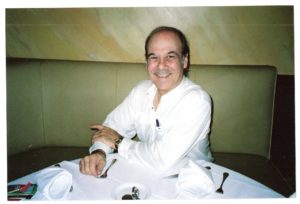“We’re a-movin’ on down…But Not to the East Side!”
[AdSense-A]
If you remember the great television show, “The Jeffersons,” then you might remember the opening song, which clearly stated that the Jeffersons were moving on up…to the east side of New York, but Henry Flagler was looking south, which meant, on a map of Florida, looking “down.”
And if you remember our last column, in which we discussed Mr. Flagler’s purchase of the Ormond Hotel and subsequent extension of the railroad to Daytona, then you might likely be interested in what happened next. And this is where we encounter, once again, the Florida Internal Improvement Fund.
The job of the Florida Internal Improvement Fund (the IIF) was to encourage development of a state that was still essentially a wilderness or, in many places, a frontier, and the way to do that was to sell land, that land to be used for development.
A couple of years ago, a woman came out with a book claiming that Flagler extended the railroad south from Daytona to Palm Beach because he was so impressed with the beautiful flowers. That, of course, is pure and utter nonsense at the level of the story that holds that, after the great and terrible freezes of December, 1894 and January and February of 1895, he extended the railroad to the shores of Biscayne Bay because some woman sent him some orange blossoms. That story, which is a complete crock of something or other, is even more nonsensical than the “he extended the railroad to Palm Beach because he loved the flowers” hooey, both of those fairy tales being utter falsehoods.
“So,” you ask, “if that is the case, then why did he extend the railroad to Palm Beach?” And while I’m glad you asked, we will debunk the orange blossom silliness in this column at a later date, but, first, it is important that our readers not only realize, recognize and understand why the railroad was extended, but how it was done.
Simply put, the Palm Beach story had nothing to do with flora. It had only to do—as the extension to Miami would—with land.
While we are not absolutely certain of the date, it is well-chronicled that not too long after the railroad was extended to Daytona, Mr. Flagler made one of his most important hires, when he brought James Ingraham aboard as his land commissioner. And I know that your next question is, “what does a land commissioner do?” and the answer is that he does not “commission land,” but, rather, his main, major and primary function was to arrange to obtain land for the railroad either at no cost (more on that shortly) or at the lowest possible cost as it moved further and further south, in most cases from the state, but, as frequently, from the counties (many fewer of them then) as well as from private land owners.
Mr. Ingraham had the knowledge and the connections to—as we say today—“make it happen” and he immediately began contacting the various parties as plans for the railroad’s expansion were put into place. But how did the extension to Palm Beach come about?
Not very long after Mr. Ingraham’s hiring he and Mr. Parrott were called into Mr. Flagler’s office in St. Augustine. On the wall of the office, supposedly, and as we have been told, behind his desk was a large map of Florida upon which, as Messrs. Parrott and Ingraham noted, was an island, well south of Daytona, circled in dark grease pen, the predecessor of today’s “magic markers” or marking pens.
After the greetings and some pleasantries, Mr. Flagler stood up, turned to the map, and said, “Gentlemen: You will kindly make arrangement for us to visit this place,” as he pointed at the island circled well down the coast.
The two men gasped almost audibly and both were at a loss for words. Finally, Mr Parrott, searching for the right words, said “But Mr. Flagler….” At which point he was cut off by his boss. “Gentlemen,” HMF stated in a voice that left no room for either rebuttal or discussion, “kindly do as I have asked.” The answer, at that point, from both men, was, of course, “when would you like to depart, sir?” To which Mr. Flagler replied, “as soon as expeditiously possible.”
“And then…and then…and then…” as the great song goes, “along came Sam…” but while Sam did not, in this case, come along, the arrangements were almost immediately made and during our next visit I will hopefully continue to hold your attention as we lay out the happenings in the upcoming part of our story.
We will be back with you in not too long of a time. Stay safe, all!
[si-contact-form form=’2′]


